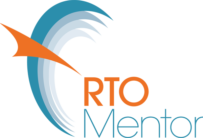This topic is close to my heart, for years I have agreed with using e-learning as one of the tools to assist RTOs in getting to a broad audience and providing flexibility with their training solutions.
As a Manager of various RTOs I have implemented e-learning strategies, along with support and the traditional classroom or on-the-job learning creating a form of blended learning.
I totally believe that e-learning can work well, if provided in a way that still meets the needs of your target group and their individual learning style. This means having animations, video, interesting changes in the pages. Lots of diagrams, audio and some written. A negative to this, is it usually can be costly if you do all in-house, especially now that Training Packages update every 6 months! (it seems). There are other solutions, like using flexible learning tool boxes, that bring the cost down.
Recently though I have seen A4 pages of words dumped onto the screen (which is smaller than the A4 page, and provided to people as their e-learning option. This is NOT an option of e-learning. This is an RTO saving costs of paper production and binding!!! Having seen it from a couple of different RTOs I am beginning to see that is it sold this way – off the shelf!!! Please don’t be fooled, your learners are not wanting this sort of delivery, they want hand holding and assistance. A4 pages on the screen is not this.
When e-learning is presented well it can certainly provide another medium to engage learners and provide a broader range of learning opportunities to learners. It also allows learners who are working shifts or not close to RTOs to still access training. Flexibility is huge with technology changing so quickly we have the use of Tablets, phones or computers to show our learning on.
Blended learning strategies work well when you are dealing with remote and shift workers (just make sure they have the IT requirements necessary for the program), giving them a chance to learn when it’s convenient for them. Also you need to consider how you will support the learners.
In any online environment the student to student social contact is lacking, the more effective colleges include a regional collective get to know you weekend or week (seems a day is not deemed long enough to do this).
With the rapid changes in technology there are some excellent e-learning software packages available that add a new dimension to your students learning experience. There are also new Smart Boards technology where you can have Q/As, and workplace based tasks, as well as having a third party section where they sign off to say it was the right person sitting in front of the key board. You would need to consider your own rigor around this.
I am commencing to use one that is loaded onto my iPad / tablet…can’t wait to see how the students love it.
Notice up till now I have been talking about the learning situation. I am not an advocate for having the whole assessment done on line. There are issues around authenticity of the person actually doing the assessment – can you really say it wasn’t someone else sitting at the computer. In the past I have tended to use that blended model again, face to face observation and questions, supervisors reports, and other forms of assessments.
As a trainer or assessor there are huge advantageous of incorporating this type of learning into the RTO – recording the sessions, having online chats with students, being able to work from your home office, avoiding traffic and flights to remote sites.
In summary look seriously at the resources you decide to use, think about your target group and their learning styles, and how the changes to your deliver will affect them.

